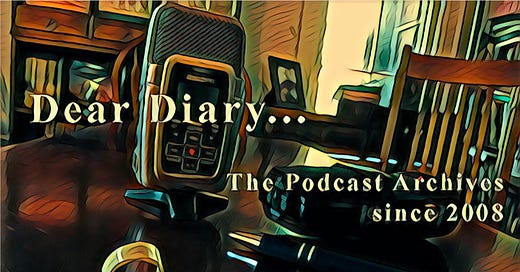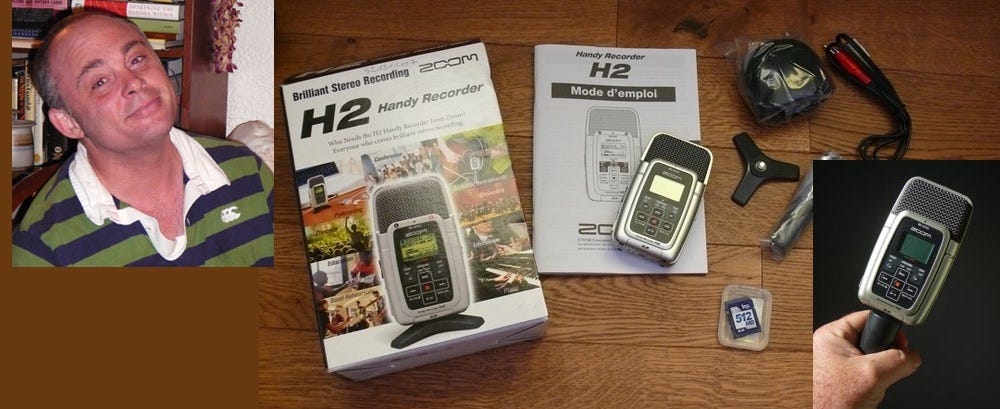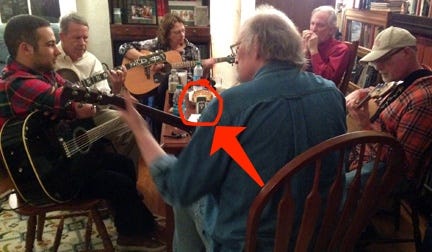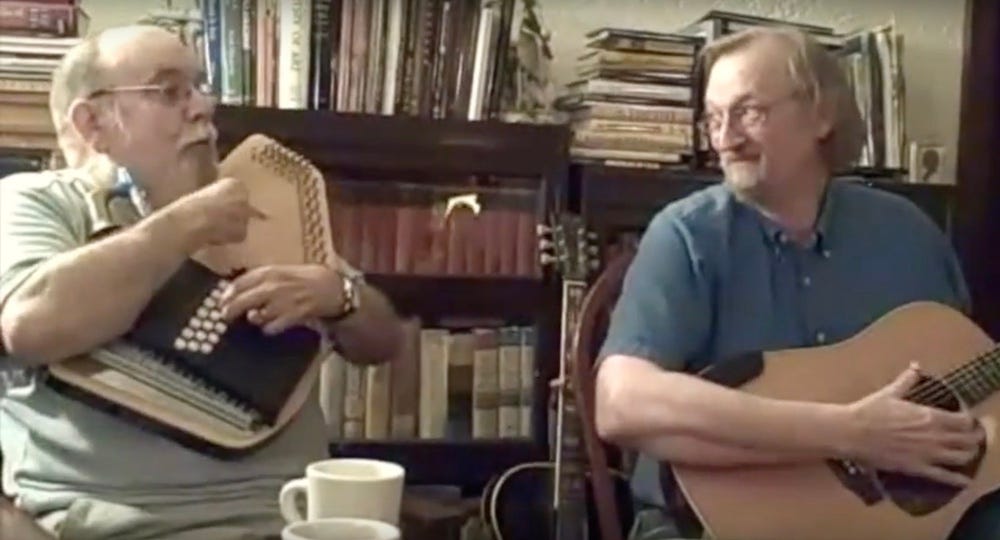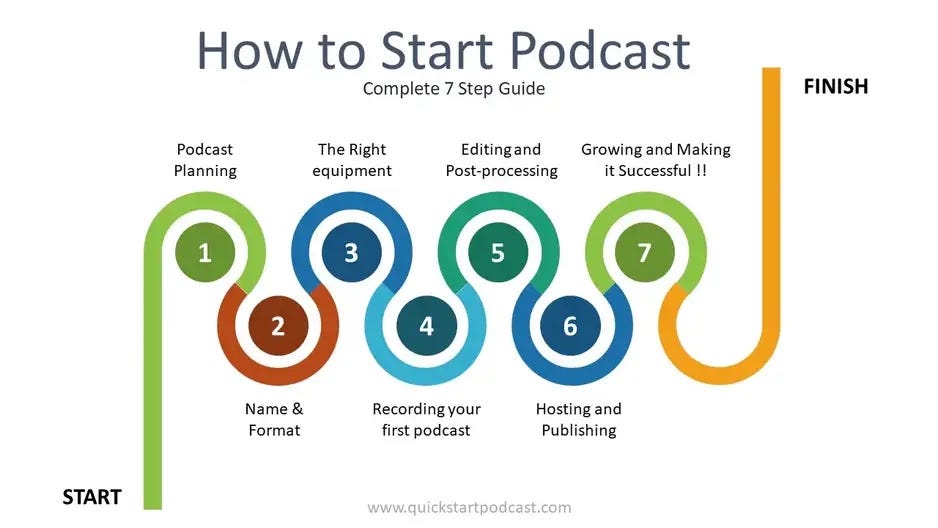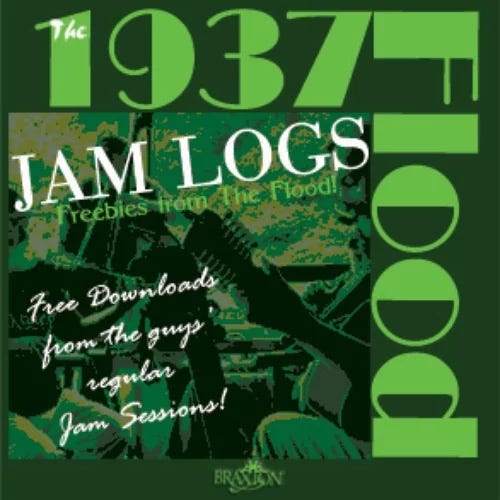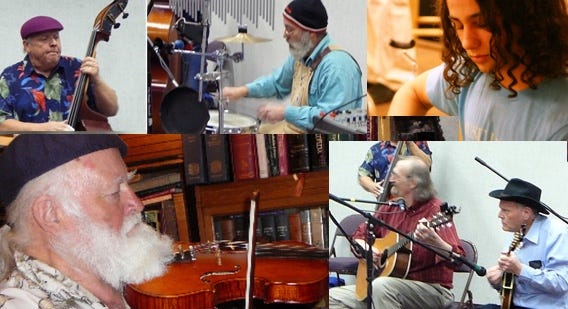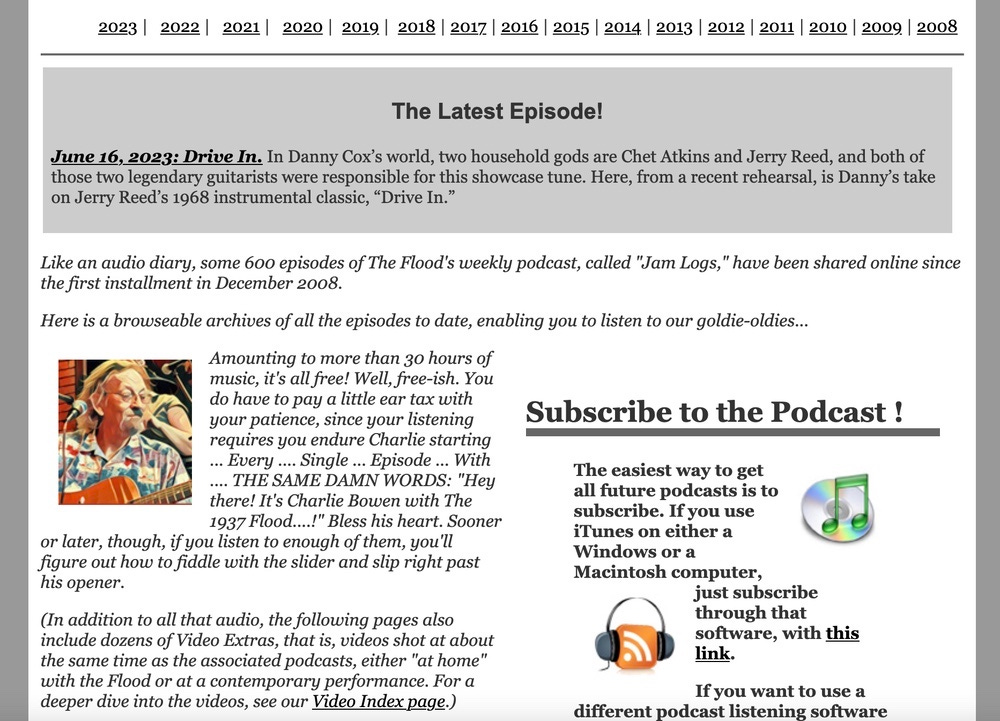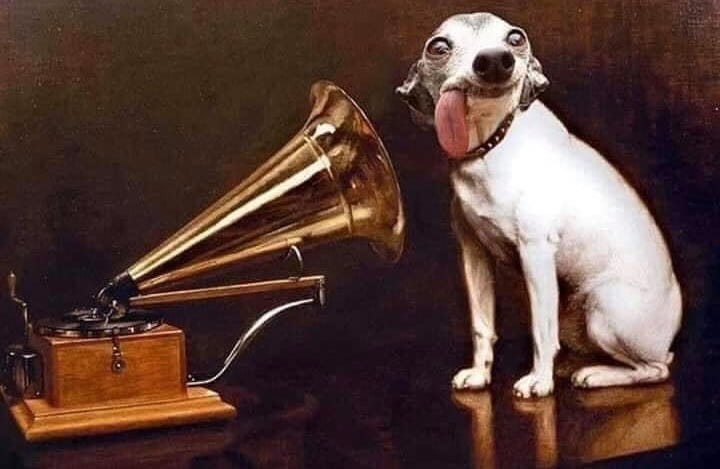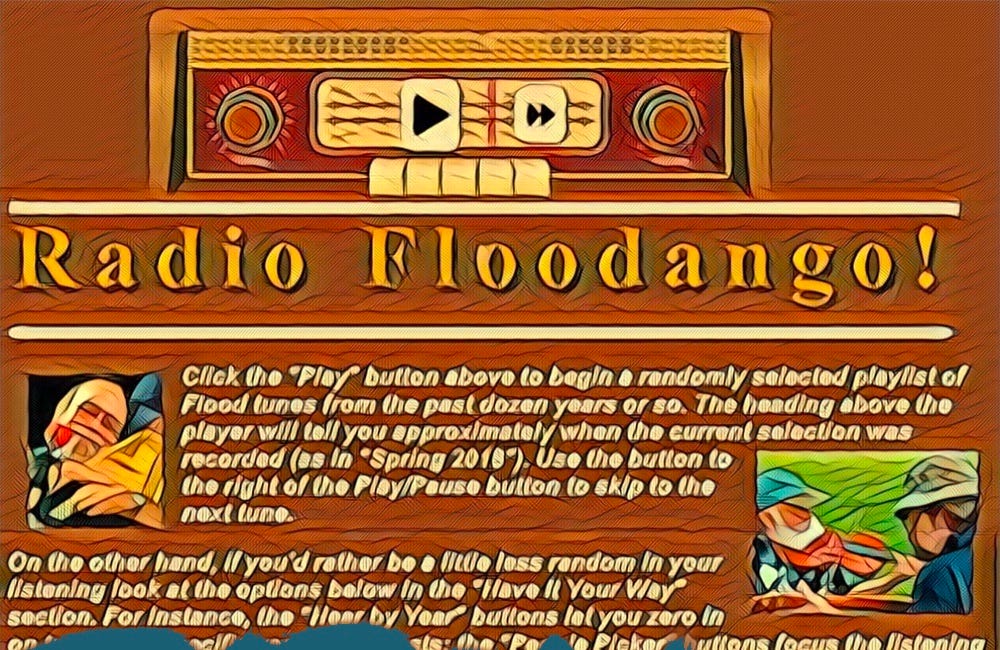The idea for our weekly podcast — which has been a fixture in the Floodisphere for 15 years now — began with an off-hand remark by harmonicat Sam St. Clair.
Noting that prices of good digital audio recorders had dropped dramatically, Sam casually suggested we buy one and have it running during our weekly rehearsals, just in case somebody happened to … you know … commit art.
The Hardware
It sounded like a good idea to us. After a little research, in early 2008 we bought an H2 Handy Recorder, a handheld digital audio recorder that had just been announced by Zoom.
We chose this unit because it gave us a lot of features for a little money (just a bit over a hundred bucks). And with four built-in mikes, it could be set in in the middle of our circle of players and, recording in the unit’s surround-sound feature, get everyone on the audio file.
We began recording in the spring of 2008, using each week’s jam session to learn a little more about how to get the most out of the new recorder.
“Podcast”? What’s a Podcast?
After we got comfortable with the H2’s workings, it was David Peyton who proposed we do more with all that audio than just file it away in a computer archives.
“How about a podcast?” Dave said.
Well, we were all pretty impressed with Peyton’s tech prowess. After all, “podcast” was not yet a widely known word. In fact, in 2008 it had been in use for less than three years, mostly in geeky computer publications.
“How do we make a podcast?” Charlie Bowen asked.
“I have no idea,” Peyton replied with a chuckle. “Bet you’ll figure it out, though.”
Bowen was left in a rare state for him — speechless — but he accepted his old comrade’s challenge.
Six months later — after Charlie googled reams of articles about audio editing, web-friendly file formats for a podcast, how to find a host for syndicating it, etc. — the band was ready to launch what we called “Jam Logs.”
Hitting the Air
For the first few episodes, we combed recordings of the previous few months of jams and just picked tunes that grabbed us.
The audio we chose for the debut episode was recorded 15 years ago this week, and beautifully exemplified the loose, chatty atmosphere of a Flood gathering. Listeners hear Doug Chaffin and Charlie start picking some random blues figures. Right away Mickey Ellis and Dave Ball hop in on drums and bass.
Before it’s over, Joe Dobbs joins, then hands it off to Jacob Scarr. Only after they’ve been playing it for a while do the guys determine that they’re playing “St. Louis Blues.” (Mid-song, you hear Doug laugh. “Is that what you’re playing?” he says. “I thought that’s what you were playing!” Charlie replies….)
Audio Diary
After the first few episodes, we started making each new installment from that week's Flood session, a tradition that has continued to this day. That means the weekly podcast is a kind of audio diary. So far we’ve had nearly 700 episodes — some 45 hours of music — all saved and browsable on a special section of our web site.
It's all free. Well, free-ish. You do have to pay a little ear tax with your patience, since you have to endure Charlie starting ... Every .... Single ... Episode ... With .... THE SAME DAMN WORDS. ("Hey there! It's Charlie Bowen with The 1937 Flood....!")
Sooner or later, if you listen to enough of them, you'll figure out how to fiddle with the player’s slider and slip right past his repetitious opener.
Enter Radio Floodango
A few years ago, the deep, broad database of all those Flood tunes enabled us to roll out our most ambitious project to date. Radio Floodango, the free music streaming service, lets you listen to a continuous, randomly generated playlist of Flood tunes whenever/wherever you’d like. For more about that, check out this earlier article:
Radio Free Flood
A year ago this week, we rolled out the most ambitious project we’ve ever tackled. Radio Floodango, our free music streaming service, lets you listen to a continuous, randomly generated playlist of Flood tunes. Where’s That Music Coming From? We’re fishing in a pretty big pond here. Some 650 episodes of our weekly podcasts — about 44

